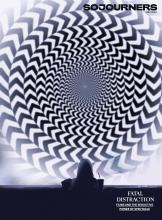Black Church
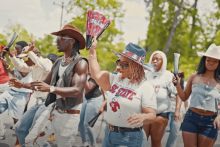
I didn’t expect church to be the place where I learned 803Fresh’s “Boots on the Ground,” the latest line dance taking the nation by storm. The song, which currently has more than 14 million views on YouTube and is known for the refrain, “Where them fans at,” has been danced to by folks like Shaquille O'Neal, Ciara, Kamala Harris, Tina Knowles, and Michelle Obama. And it’s been performed everywhere, from trail rides to graduations, news broadcasts to talk shows. But when people started performing the line dance in church, not everyone was pleased.
“Some of these so call [sic] churches is night 🌙 clubs,” wrote one Facebook user in response to a viral video of a “Boots on the Ground” line dance performance at a small church. “Put them boots on the PASTOR and scoot him out of the church,” another wrote.

Parenting With Grace
Aizaiah and Nereyda Yong are married ministers and parents to four kids. In Sacred Parenthood, the authors break down “contemplative parenting,” offering simple practices parents can implement to be more intentional and present with their families. Herald Press
Soft Spaces
Liz Walker offers an intimate account of a Black church’s trauma-healing ministry, emphasizing the importance of sharing grief and providing “soft spaces” for healing. No One Left Alone reveals how vast pain can be transformed into hope and connection through the power of community. Broadleaf
Unconditional Love
In Queer & Christian, Brandan Robertson reclaims faith for LGBTQ+ Christians. Through accessible scholarly insight and personal narrative, he challenges the “clobber verses” of the Bible, celebrating queer saints and offering hope for anyone seeking inclusive spirituality. Macmillan

“I’LL BREAK IT down so that it may forever remain broken: Blackness is holy in and of itself,” writes D. Danyelle Thomas in her new book, The Day God Saw Me as Black: The Journey to Liberated Faith.The founder of the digital faith community Unfit Christian reflects on the ways that white evangelical theology has shaped the Black Church. She lovingly calls in the Black Church to liberate our mindsets around race, gender, sex, and sexuality.
Like Candice Marie Benbow’s Red Lip Theology (2022) and Lyvonne Briggs’ Sensual Faith (2023), The Day God Saw Me as Black reflects Thomas’ identity as a Black millennial womanist. Her experience growing up as a fat, Southern, Black Christian woman is central throughout.
Thomas expresses her love for the Black Church, even as she names all the ways it has been colonized and shaped by white evangelicalism — a Christian tradition “plagued by racism, sexism, classism, trans- and homo-antagonism, and systemic oppression.” These are the evangelical values, Thomas explains, that insisted “God is good all the time,” even amid violence and oppression, from the transatlantic slave trade to South African apartheid to the Tulsa Race Massacre.
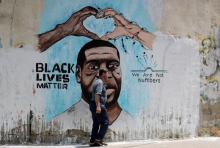
The story of Zion resonates with the history of African Americans. Blacks and Jews share common legacies of segregation, genocide, and racial domination. No wonder many enslaved Africans understood biblical Israel as a symbol of freedom from bondage. As historian Robin D.G. Kelley explains, the story of Exodus “provided Black people not only with a narrative of slavery, emancipation, and renewal, but with a language to critique America’s racist state.” Exodus was our political compass through the wilderness of slavery. Except we imagined ourselves as the Israelites, America as Egypt, and “Massa” as the Pharaoh whom freedom fighters like Nat Turner and Harriet “Moses” Tubman demanded, “Let my people go!”
But my view of Israel changed when I learned about Palestine in the streets of Ferguson, Mo.

Gary’s goal in the trial was to bring the buried deeds of the Loewen Group into the light, to tell the story they hid behind contracts and laws and cultural biases and systemic injustice. In doing so, he aims to purchase some measure of justice. Is this what Willie Gary learned in Black church?

Ashon T. Crawley, author, artist, and professor of religious studies and African American and African studies at the University of Virginia, constructed a memorial for Black church choir directors who died during the U.S. HIV/AIDS crisis. The exhibit, “HOMEGOING,” told the story of the musicians who, as he puts it, “died within a kind of epistemological moment,” where to be a musician in the Black church was to be understood as gay, to be gay was to be understood as HIV-positive, and vice versa.
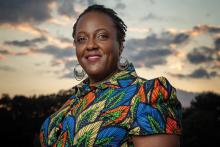
WHEN I WAS 8 years old, I fried an egg on the street. Well, I tried to fry an egg on the street. It had been a particularly brutal summer in Florida. On the days when the playground slides were too hot to go down, my mom would say, “It’s hot enough to fry an egg on the sidewalk!” I kept my eyes glued to that splattered yolk for two hours until a car tire brought the grand breakfast experiment to an end. Frying eggs on sidewalks was how I learned to conceptualize extreme heat.
When it comes to describing climate change urgency in Black communities, Heather McTeer Toney taps into something simple: streetlights. In Before the Streetlights Come On: Black America’s Urgent Call for Climate Solutions, she writes that when she was growing up, kids could play all day outdoors, but they had to be home “before the streetlights came on.” As twilight settled in and streetlights started to flicker, kids would call out, “Hurry up, we ain’t got all day!”
“Right now, that same call to action is carried in the waves of massive hurricanes, on the winds of devastating firestorms, and in the uncharacteristic heat of winter,” McTeer Toney writes. Using a familiar metaphor, she issues a call to action of her own.
Climate change and environmental justice is not foreign to McTeer Toney or the communities she writes about. At age 27, she was the first female and youngest person to serve as mayor of Greenville, Miss., where she was born and raised. As mayor, she brought the city out of debt and established sustainable infrastructure repair. For three years, she led the Environmental Protection Agency for the southeastern United States. While at the global nonprofit Environmental Defense Fund, she addressed environmental policy and community organizing within and beyond the U.S. This spring, McTeer Toney became executive director of Beyond Petrochemicals, a campaign to stop the rapid expansion of petrochemical and plastic pollution, particularly in the Ohio River valley and along the Gulf Coast.
McTeer Toney and her family attend Oxford University United Methodist Church in Oxford, Miss. I spoke with her by phone about her work, her book, and the hope her faith demands. — Christina Colón
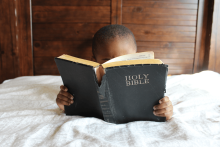
Joshua was one of the star students in his Sunday school class at a Black Baptist church he and his family attended; his teacher raved about Joshua’s helpfulness and engagement. But when it came to preschool, Joshua’s parents were perplexed.
“Every day the preschool teacher has something negative to say about [him,]” Joshua’s father later told researchers.
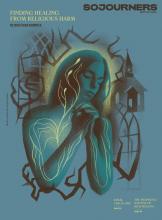
Healing from religious harm: Why compassionate community is part of the journey.

Capitalist Cautionary Tale
BlackBerry highlights the role of greed in capitalism through the story of the rise of the BlackBerry smartphone. The film, which transports us to a time when smartphones weren’t omnipresent fixtures in our lives, shows the danger of valuing innovation more than ethics.
Elevation Pictures
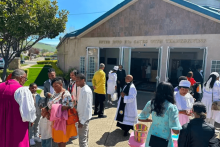
A Black church in California has set out to develop a microgrid that could generate up to $1 million annually. The project, spearheaded by Gemini Energy Solutions and Green The Church, is part of a larger effort to empower Black churches — and their communities — to join the clean energy movement.
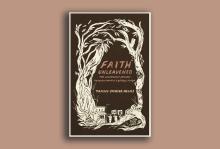
Tamice Spencer-Helms shows how colonialism and white supremacy are embodied in a Jesus made in Christian Europe's image.

THIS JULY, THE United States turns 247 years old. Independence Day calls to mind a powerful narrative—our nation’s defiant break from the British Empire, explosive population growth and expansion, and ascent as a world power. Yet within this historical movement are rooted many other stories—large and small—that reflect who we really are as a nation. When we hold up a larger mirror, when we view ourselves more completely and take all these stories into account, then we recognize that “our” history is more than a collection of dates, events, and people prioritized by the powerful. History is a complex web of beliefs, practices, and interpretations that exist in the sacred movement of time and space as a spiraling mixture of who we are and who we are becoming.
Sharing a common understanding of history is complicated these days by new words in our lexicon like “fake news” and “alternative facts.” How do we know what to believe and what to reject? Isn’t “revisionist history” a bad thing?
In fact, many historians agree that allhistory is revisionist. Historical interpretation, by its very nature, changes with time and circumstance, requiring new views and fresh analyses. From one perspective, the revision of history in any form means to criticize the past and disrupt commonly held ideas and beliefs. Conversely, the introduction of new, validated, historical information broadens the scope of discourse and deepens its meaning in ways that bring clarity to the past and hope for the future.

CIVIL RIGHTS LEADER Ella Baker utilized the strength of her voice at the height of that movement to fundamentally question the notions and ideas of equality and leadership in this nation. In 1969, Baker said, “[T]he system under which we now exist has to be radically changed.” This means “facing a system that does not lend itself to your needs and devising means by which you change that system.”
Black women have long been considered the backbone for civil rights, social justice, church advancement, and animators of democracy in the United States. If this is so, then why are so many still overlooked for advancement in political power as well as the everyday jobs that they are more than qualified for?
While “women” won the right to vote in 1920, Black women fought for about another half century to exercise their right. The inequities of gender, race, and access are still with us — and there is no greater time than now to push hard for political and social advancement.
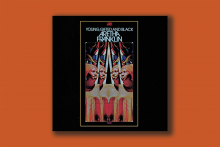
TOWARD THE END of the film documenting the performance of Aretha Franklin’s album Amazing Grace, the singer sits at a church piano. Like so many times in her childhood, she begins playing — gradually, almost tentatively — the opening chords to “Never Grow Old.” It was her first single, released when she was 14. As she sings of “a land where we’ll never grow old,” built by “Jesus on high,” folks in the audience — including gospel pioneer Clara Ward — cannot help but get up and dance. “Never, never never” — and then a Franklin trademark: mmm-mmm-mmm — “never grow old,” she testifies. You believe her.
This year, Aretha’s Amazing Grace turned 50. The album — recorded live at New Temple Missionary Baptist Church in Los Angeles with James Cleveland’s Southern California Community Choir and one of the greatest backing bands in all of pop music history — blends and crosses boundaries of genre, generation, race, and class. In 1972, Amazing Grace was not just a return to Aretha’s roots, but a vision of a future — one rooted in the Black experience in the U.S.
The liner notes credited Gene Paul as “assisting engineer.” Today, he is a legendary producer. Paul traces the genesis of Amazing Grace to Aretha’s 1972 record Young, Gifted and Black. That album’s title track, penned and first sung by Nina Simone, was a breakthrough in the civil rights and Black pride movements. “In the whole world you know / there’s a million boys and girls / who are young, gifted and Black,” the lyrics proclaim. While recording Young, Gifted and Black, Paul told Sojourners, Aretha began to conceptualize the live recording of a gospel album as a follow-up. When she thought of the potential project, Paul said, she “was smiling, captivated.” To Paul, there is a clear through line from Young, Gifted and Black to Amazing Grace: The former spoke to the contemporary Black political moment; the latter looked back in time while pulling her spiritual and cultural roots into the present. Both pointed the way to a Black future that was joyous and free.
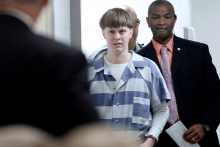
The Supreme Court on Tuesday declined to hear white supremacist Dylann Roof’s bid to overturn his conviction and death sentence for fatally shooting nine Black people in 2015 at a church in Charleston, S.C.

"THE FUTURE IS Black!” is a clarion cry at the entrance to “Mothership: Voyage into Afrofuturism,” an exhibit at the Oakland Museum of California. Its placement is a prickly reminder of the indomitable persistence of Black lives, and affirmation that in the imagined future they will not only matter but be present, alive, and thriving. This declaration of an imagined future of thriving Black lives must be thrust also into the importance of the Black Church and Black faith.
Much ink has been spilled on the misnomer that “God is dead”—with a caveat that the Black Church is dying—by scholars and practitioners alike. But, the monolithic nature of the Black Church has long been dispelled by prolific sociologists of religion such as W.E.B. Du Bois, C. Eric Lincoln, Cheryl Townsend Gilkes, and Anthea Butler, to name only a few. While the debate of the status of the Black Church rages on, the lived reality of the Black Church is that it is very much engaged and transforming as an institution in America and around the globe.
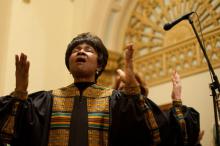
Black women have been historically marginalized both in the church and society — and this trend continues today in theological education as well as the church. Neither the church nor the world of theology will survive if things continue in this direction.

Danté Stewart is a product of two of the most powerful traditions in the United States: the Black Christian tradition and the Black literary tradition. In his new book, Shoutin’ in the Fire: An American Epistle, Stewart traces how these traditions have touched his life and why he believes they can heal the Christian church and the United States.
